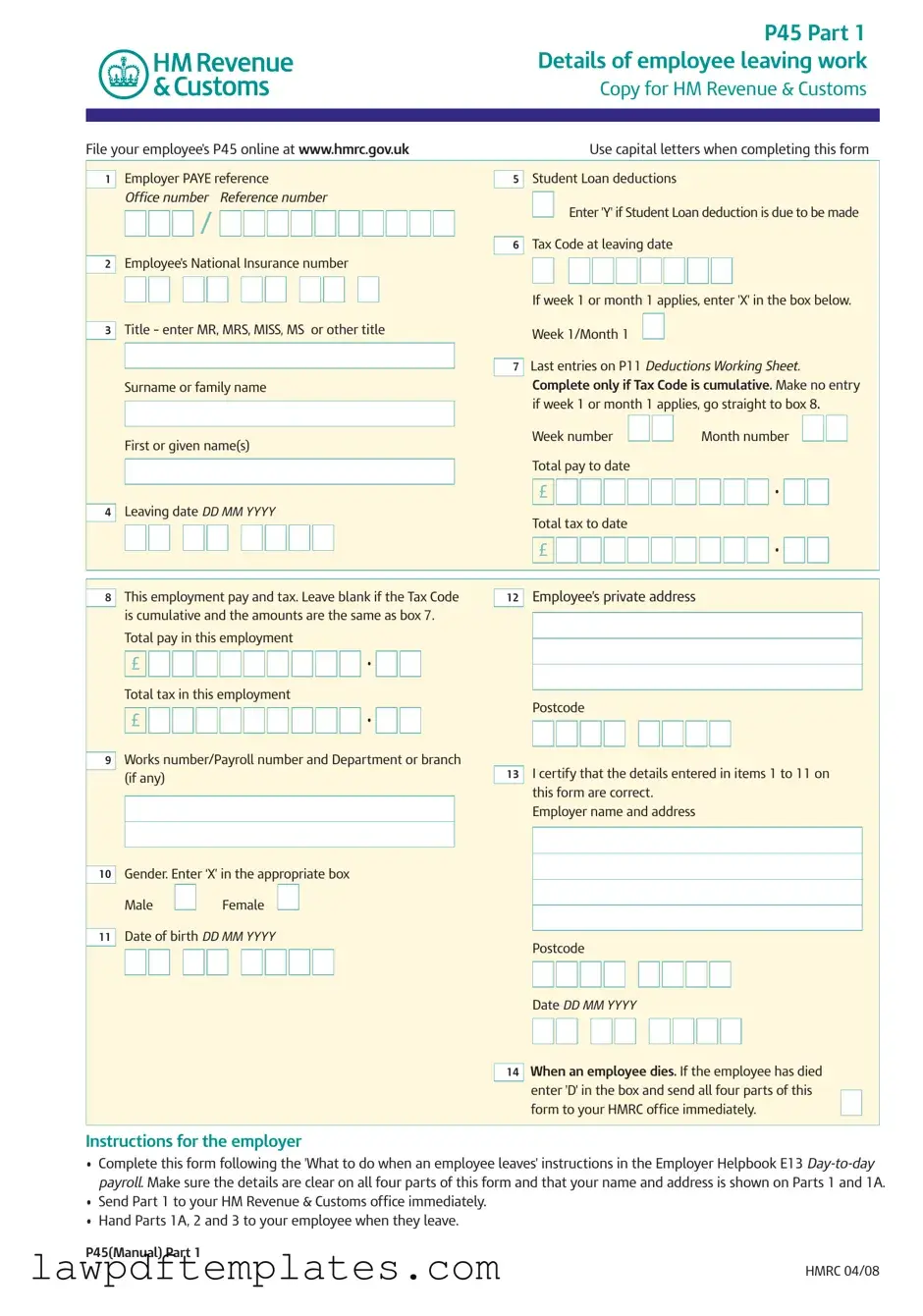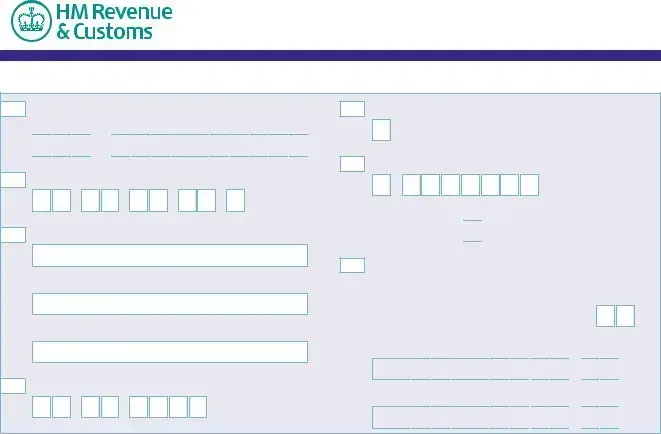Filling out the P45 form can be a straightforward task, but mistakes are common. Here are ten frequent errors that people make when completing this important document.
One major mistake is failing to use capital letters throughout the form. The instructions clearly state that capital letters should be used. Not adhering to this guideline can lead to confusion and delays in processing.
Another common error involves misreporting the employee's National Insurance number. This number is crucial for tax and social security purposes. If it’s entered incorrectly, it can cause significant issues down the line.
Many people forget to check the appropriate box for the Tax Code at the time of leaving. If the employee's Tax Code is cumulative, it’s essential to complete that section accurately. Leaving this blank can lead to incorrect tax deductions in future employment.
Some individuals also neglect to enter the leaving date in the correct format. The date must be in the format DD MM YYYY. An incorrect date can lead to administrative headaches for both the employer and employee.
Another frequent oversight is not completing the total pay and tax to date sections. These figures are essential for the new employer to calculate the correct tax deductions. Omitting this information can result in over- or under-taxation.
In addition, people often forget to certify the details entered on the form. Failing to sign or date the certification can render the form invalid, causing delays in processing.
Some employees mistakenly think they can skip providing their private address. This information is necessary for record-keeping and tax purposes. Omitting it can lead to complications later on.
Another common error is not indicating whether the employee has a Student Loan deduction. If applicable, the box must be marked accordingly. Ignoring this can lead to incorrect deductions being taken from the employee's pay.
Additionally, individuals sometimes overlook the importance of keeping Part 1A safe. This section is vital for the employee's records and may be needed for tax returns. Losing it can complicate future tax filings.
Lastly, many people fail to follow the instructions for submitting the form. Parts 1A, 2, and 3 must be handled correctly to ensure compliance with HM Revenue & Customs. Ignoring these steps can lead to unnecessary complications.









 /
/ 







































 •
• 





















 •
• 









 /
/ 







































 •
• 


